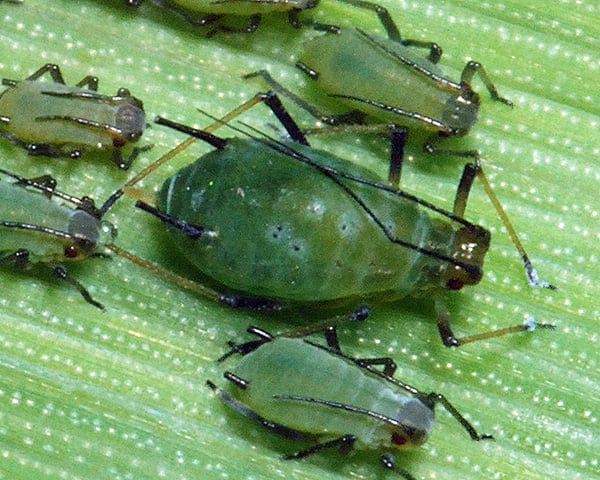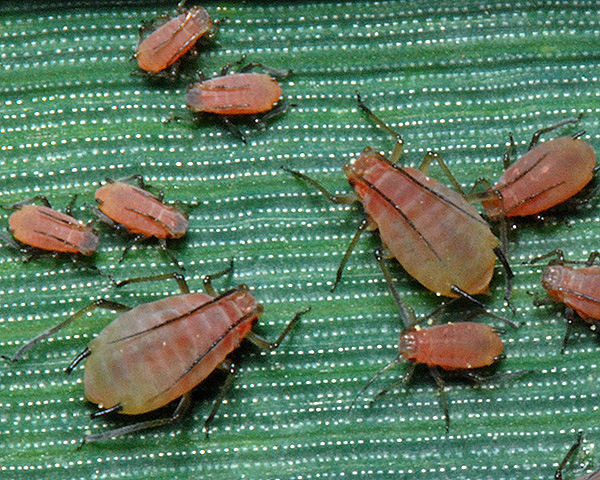Symptoms, description and lifecycle
Wheat aphid outbreaks can be very damaging to cereal yields, especially in wheat. It causes direct damage by feeding on fruits, leaves, stalks and ears, and indirect damage by excreting honeydrew and transmitting viruses. There is no set of clear symptoms for specific infestations on leaves or earheads. Early yellowing of upper leaves and ears could be observed after heavy infestation but is not specific to wheat aphid. The same type of symptoms could also be due to other aphid species or several plant pathogens.
The adult aphids are 1.3-3.3mm long, winged ones are 1.6-2.9mm long. Body colour of Sitobion avenae could be pale green, yellowish, dark green, pinkish orange or brown. It is also a potential vector for several viruses including Barley yellow dwarf viruses.
Organism
Sitobion avenae
Host range
Sitobion avenae occurs on all cereal species including wheat, barley, rice and maize and can develop on most cultivated or wild grasses.
Conditions favouring pest
Wheat aphid is already established internationally in areas similar to many of the grain growing regions of Australia.
Method of spread
Aphids generally can spread via crawling or flying including wind assisted; on plant material and on clothing, machinery or tools.
Confused with?
Aphids look very similar to the naked eye. The same symptoms are also similar and could also be due to other aphid species or several plant pathogens.
Where?
Sitobion avenae is widespread throughout the world, mainly in areas with temperate, Mediterranean or steppic climate. It is widespread in all Europe, in North Africa, the Middle East, Central Asia and the Indian subcontinent. It has spread through North and South America and seems to be more recently introduced to Africa, south of the Sahara.

Image 34. Green version of the nymphs stage. Source: Influentialpoints.com

Image 35. Red version of the nymphs stage.
Source: Influentialpoints.com


